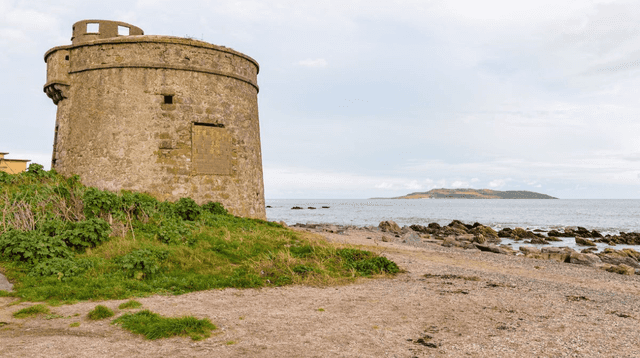
News


If you follow any number of hospitality accounts on social media, you may have noticed a yellow square with the heading "VAT 9" in bold black lettering populating your feed.
This tile is the flag of VAT 9 Now, a group of hospitality business owners lobbying to reinstate the hospitality VAT rate back to 9% and "enable businesses to stay open" (Instagram/vat9.now). The group launched on March 28 this year, and is appealing to members of the public to spread the word and contact their local TDs to highlight the issues Irish hospitality is facing.
The temporary 9% VAT rate for food supplies came into effect on 1 November 2020 in response to the challenges faced by businesses as a result of the COVID-19 pandemic and various lockdowns. The reinstatement of the rate was pushed back several times, but ahead of the increase on 1 September 2023, the Government indicated that there would be no further extensions beyond this.
Sure enough, the 13.5% VAT rate was reinstated on 1 September 2023, which impacted goods and services including supplies of certain food and beverages in restaurants, cafés and bars; admissions to attractions like cinemas, museums and exhibitions; the provision of hotels, guesthouses and similar accommodation; and hairdressing services.
From where we're sitting, we've seen far too many cafés and restaurants closing in the past year or so, unable to contend with the VAT increase, impending repayment of debt warehousing, and rising costs associated with running a business in recent years. Many are well-established businesses, deeply embedded in their respective locales and as Jamie Griffin of the since-closed Storyboard cafe in Islandbridge points out, "one café isn't going to be churning out millions of euros. You're almost doing it to be part of the community".
What's striking is the clear disparity between how the Department of Finance and people actually working in the industry perceive the state of Irish hospitality at present. In a statement to Lovin, a spokesperson for the Dept of Finance said that the domestic economy has proven to be "remarkably resilient", adding:
"Looking ahead, as inflation eases, the real disposable income of households should recover and support consumer spending. As a result, households are on a stronger financial footing and this will support demand for contact-intensive services including the tourism and hospitality sectors".
Meanwhile, multiple business owners we spoke to insist that the hospitality industry is "on its knees", with some having made the tough decision to close up shop rather than attempt to keep absorbing rising costs.
"Even with strong trading figures, and an established customer base, both in the shop and the bakery, the margins have become so tight that they're almost non-existent", Benjamin Pugliese, owner of Bakeology on Dublin's Meath Street tells Lovin. "Although the taxes we pay for the products are lower than those of a restaurant, we have no margin for error or investment to be able to have better quality products or more variety of products. It is not only difficult to find accessible suppliers but also to be able to pay a salary as the big companies pay for the same work".
Carol Quinn of Lane 13, a café in Bray echoes this, telling us: "When margins are already tight, it means that cuts have to be made to meet these VAT payments. It’s becoming harder and harder to invest in or try to grow the business, there’s just no cash to spare. We are having to ask more of the staff we have as it’s just not affordable to hire any more".
The Department of Finance's promises of disposable income recovery for households are also hard to envision from a consumer perspective, with more than 60% of families surveyed citing that wages just about cover essential monthly expenses with little left over for leisure. While the country appears to be doing well economically from a top-line perspective, this isn't necessarily reflected in the disposable income of an average earner.

Several businesses we spoke to had only opened their doors during the COVID-19 pandemic and didn't know any different than the 9% VAT rate.
"When I started trading in 2021 the VAT was at 9% so in a way I didn't know any better. At the same time, I knew it had come down from 13.5% as a result of the government's attempt to help the hospitality sector / small businesses sector during the pandemic. My business started in a horsebox so I priced things accordingly and got on with it. There is no doubt it helped businesses who had been trading earlier than me, as they felt the benefit of the reduction from 13.5% to 9%", Hannah Barnett Byrne of Wild and Tame in Kinsale, Co. Cork tells us.
"When the VAT went up I did my best to absorb the cost of it, but soon didn't have a choice but to increase my prices. It was a huge increase as when I started trading in 2021 it was at 9%. The VAT increase made everything harder, less room to grow and add more to my business. Constantly watching cash flow and bank accounts. This is not a nice place to be in especially when you have so many other obstacles to juggle when running your own business".
The department spokesperson pointed out that 14 EU countries have a VAT rate of 12% or higher on food services, adding "our nearest neighbour in Great Britain and Northern Ireland has a VAT rate of 20% on food services". The spokesperson also stressed that "VAT reductions, even temporary VAT reductions, have a cost to the Exchequer", and "the cost of a further temporary VAT reduction to 9% for a full year is estimated to be €764m". However, business owners warn that the alternative cost is a mass closure of restaurants and cafés, which may simply be unable to absorb rising costs.
"With statutory sick days set to increase again in January 2025, possible minimum wage increases and the VAT rate likely to stay at 13.5%, it might be a good idea to pick up a good home coffee machine because no small coffee shop is surviving that", Quinn of Lane 13 warns.
Meanwhile, Pugliese of Bakeology said "in the current climate for hospitality businesses operating on the smaller end of the scale, the cost of trading is so high that most of us are hanging on week by week, trying to make it work. Raising the VAT rate in the middle of a hospitality crisis here in Ireland shows no sign of consideration for small businesses".

Sadly, the Department spokesperson has said Minister Michael McGrath "has no plans to reduce the VAT rate for the tourism and hospitality sector to 9%". Based on what we've heard from business owners, this is extremely concerning. The sentiment of many is that businesses simply won't survive if the 13.5% VAT rate remains in place, with more sinister theories being discussed by some people in the industry.
"I think it's either a complete ignorance on [the Governmnent's] part, that they just don't have a clue what's going on, or it's kind of targeted", Griffin said, adding, "there's a lot of people, a lot of theories out there that they're trying to weed out the "bad eggs", the ones who are struggling. They're more interested in places that are safe money and safe revenue for them".
While big chains might be safer bets in terms of revenue, they're not the kind of places that attract tourism and certainly not likely to play a major role in local communities. What paddy cap-clad, fanny pack-wielding tourist is going to come to Ireland to discover their roots, if all that's left is Big Macs and venti frappucinos?

Every business we spoke to had a story to tell about children they've watched grow up, coming in for brunch with their parents every weekend and customers whose interaction at their local café might be the only conversation they have all day. These stories aren't new, they're well documented - we all know how important a run-with-love café or restaurant can be for a community. It seems that the powers that be might be taking this for granted, assuming that these places will always be able to keep their doors open. The argument that some other EU countries have a VAT rate of 12% or higher on food services is reminiscent of something a frustrated maths grind says to a Junior Cert-er who's struggling to grasp theoretical probability ("all my other students got this in ten minutes, why can't you?")
Yes, the UK has a VAT rate of 20%. The UK has also seen over 500 restaurant closures in the final quarter of 2023 alone, as per The Caterer. UK publication The Drinks Business last year reported that an average of five restaurants closed each day in the first three months of 2023, with 569 businesses filing for insolvency in the first quarter of the same year. The fact that their VAT rate is higher than ours isn't reassuring, and I doubt it makes any Irish business owners feel better about the uncertainty they face.
You can find out more about the VAT 9 movement and why it's so important via the group's Instagram page.
What do you think of the VAT reinstatement? Let us know on hello@lovin.com
READ ON: